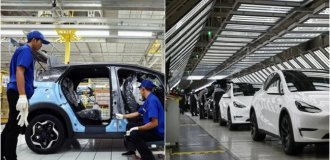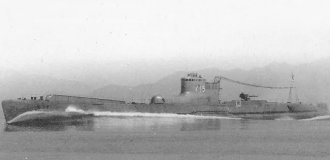One of those people who stood at the origins of the technical revolution of the 19th century was Gottlieb Daimler - a talented engineer and designer, entrepreneur and manager. The man whose name is associated with what drives, flies and floats today, what is driven by "flaming motors", whose company Daimler revolutionized the world of internal combustion engines. 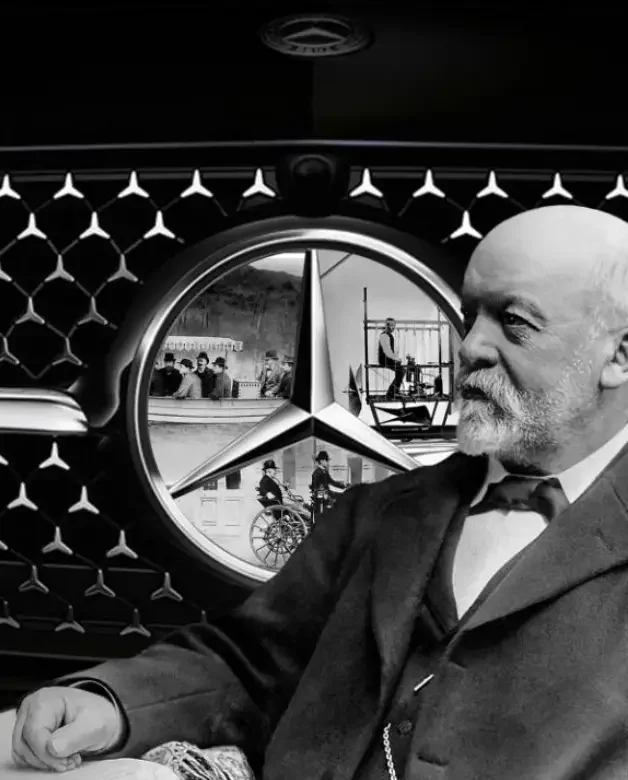
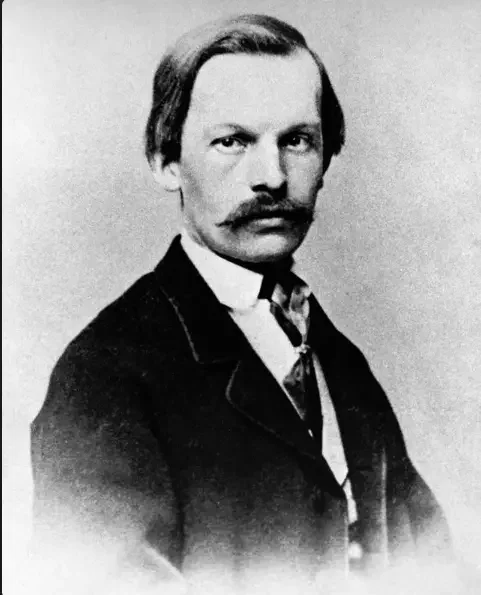
Gottlieb Daimler in his youth
Daimler was born on March 17, 1834 in Schorndorf near Stuttgart and was the second son of master baker Johann Friedrich Daimler (1801–1875) and his wife Wilhelmine Friederike Daimler (1803–1864).
After Latin school, and on Sundays he also attended drawing school, which speaks volumes about his technical talent, Gottlieb began an apprenticeship as a gunsmith in Schorndorf in 1848, at the age of 14. This gave him a very good basic training in precision mechanics and working with explosives and flammable substances.
Gottlieb Daimler began his working life in 1853 at the Elsässische Maschinenbau-Gesellschaft Grafenstaden (EMBG) machine building company in Grafenstadt, where he worked for four years. In his free time, Daimler attended theoretical classes at the company and prepared himself for further training. His training was so good that in 1857 he entered the third year of his engineering studies at the Polytechnic School in Stuttgart and was exempted from tuition fees. Although this educational institution was called a school, it was analogous to today's institute.
In mid-1860, the young engineer moved to Paris to work at the Périn factory in Paris. From the spring of 1861 to the end of 1862, he also became familiar with the British engineering industry at the engineering factories in Oldham and Leeds, at two locomotive manufacturers in Manchester and at a machine tool factory in Coventry.
In 1862, he began working as a designer at the Metallwarenfabrik Straub in Geislingen an der Steige, and a year later, the young design engineer became a workshop inspector at the Bruderhaus machine building plant in Reutlingen, where he met Wilhelm Maybach in 1864. From that time on, Maybach became Gottlieb Daimler's partner and accompanied him at every stage of his professional life.
But at that time, neither of them could even imagine what influence their acquaintance would have on the development of global technical progress. 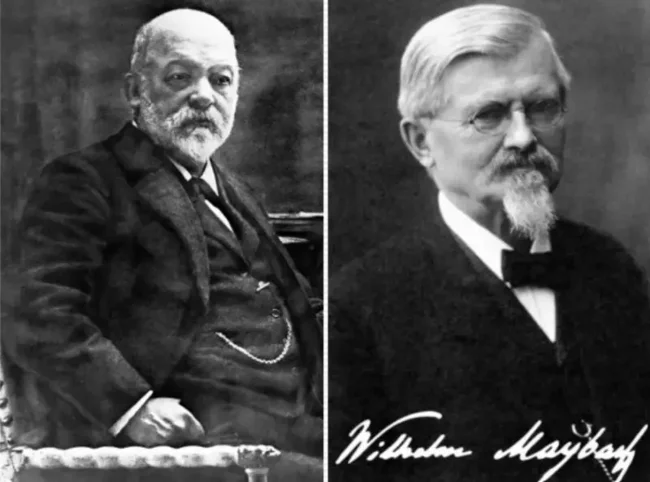
Gottlieb Daimler (17.03.1834 – 06.03.1900) and Wilhelm Maybach (09.02.1846 – 29.12.1929)
Starting in 1865, for the next seventeen years, Gottlieb Daimler occupied leading positions at various companies in the field of mechanical engineering.
In December 1868, Daimler became the head of the workshop of the Karlsruher Maschinenbaugesellschaft company, where his friend and partner Wilhelm Maybach soon began working as a technical draftsman. And what is surprising is that several years earlier, after completing his studies, Karl Benz worked as a simple mechanic at this same enterprise. Truly, not an enterprise, but a "forge of personnel"!
Three years later, Daimler moved to the Deutz gas engine plant, where Nikolaus Otto, co-owner and one of the founders of the company, inventor and designer of the first internal combustion engines, entrusted Daimler with the management of the production process.
In 1872, Daimler was appointed technical director for the management of Gasmotoren-Fabrik Deutz AG, specializing in the production of gas engines. After the construction of a new plant in Deutz and the transformation of the company into a joint-stock company, Gottlieb Daimler was busy implementing streamlined production processes and creating a technical department for development and design. He carried out this work in close cooperation with Wilhelm Maybach, who also transferred to Deutz in 1872 and was appointed chief designer in January 1873.
Daimler and Maybach launched the four-stroke engine developed by Otto into series production, and as a result, production and sales figures, as well as the reliability and economy of the engines, increased significantly.
From 1875 to 1877, Otto developed several new types of gas engines. In 1876, Otto invented another improved four-stroke gas engine, which was launched into serial production by the same Wilhelm Maybach and Gottlieb Daimler. This engine was presented as the "New Otto Engine" and was protected by the German Reichspatent DRP 532 in 1877. The design of this gas engine became the basis for the construction of internal combustion engines to this day.
In 1884, Otto invented electric ignition for his gas engines. This innovation made it possible to use liquid fuel as an alternative to gas in the future. 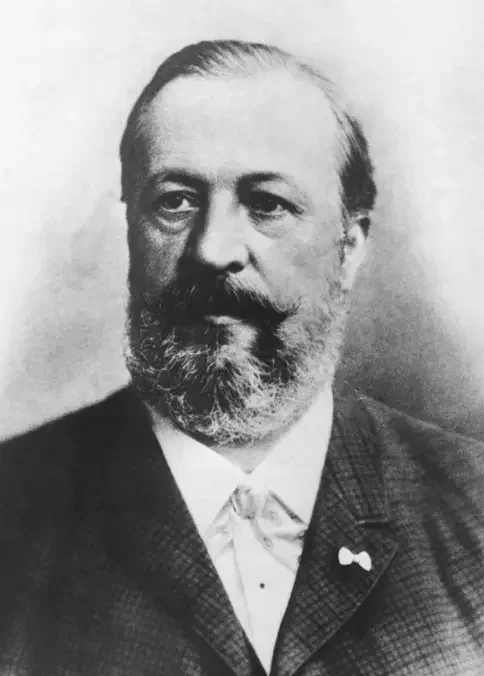
Nikolaus Otto (10.06.1832 – 26.01.1891)
At the end of September 1881, Gottlieb Daimler was sent by Gasmotoren-Fabrik to study the possibilities of selling gas engines and the state of the local industry.
In June 1882, Gottlieb Daimler left Gasmotoren-Fabrik. At that time, Daimler was 48 years old and had accumulated a huge amount of experience in management positions in large industrial companies, and he was able to save enough money to be able to start an independent entrepreneurial activity.
After leaving Deutz AG, Daimler moved to Cannstatt, where he founded the Daimler experimental workshop on his estate. In April 1882, Daimler signed an employment contract with his long-time partner Wilhelm Maybach, and as a result, a high-speed four-stroke engine was born, an absolutely revolutionary technological innovation for that time. 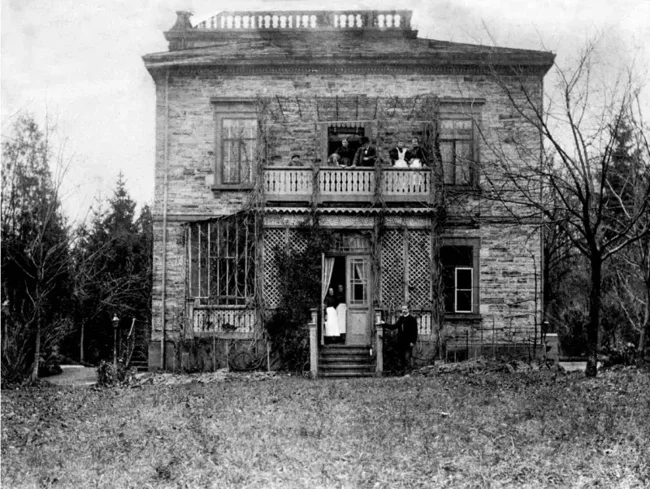
The very estate where the first Daimler engines were born 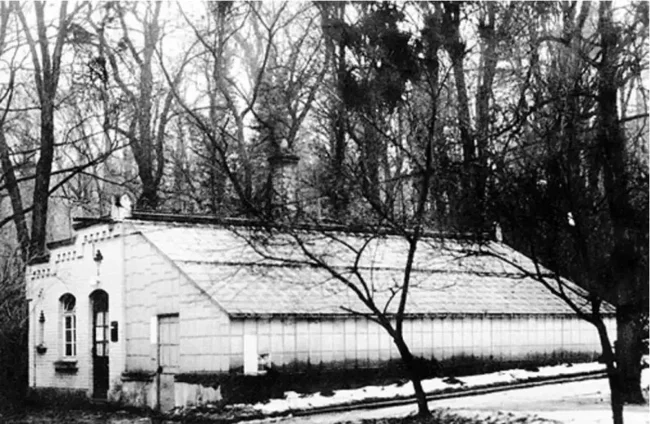
The workshop where two technical geniuses worked
Daimler's goal was to create a range of small, lightweight, high-speed engines that would be powerful enough to be used as power plants for a variety of vehicles - carriages (as cars were called then), railway vehicles, boats and airships.
On August 15, 1883, a workshop in Stuttgart, at Daimler's request, manufactured parts for the first Daimler gas engine with a horizontal cylinder arrangement and a glow-tube ignition system. This engine was the prototype for subsequent high-speed engines. Five months later, on December 16, Daimler introduced speed control by controlling the exhaust valves and applied for a basic patent for a revolutionary, improved single-cylinder, high-speed four-stroke engine, developed jointly with Maybach. Patent DRP Nr. 28022, 28243 dated August 4 and 27, 1884. 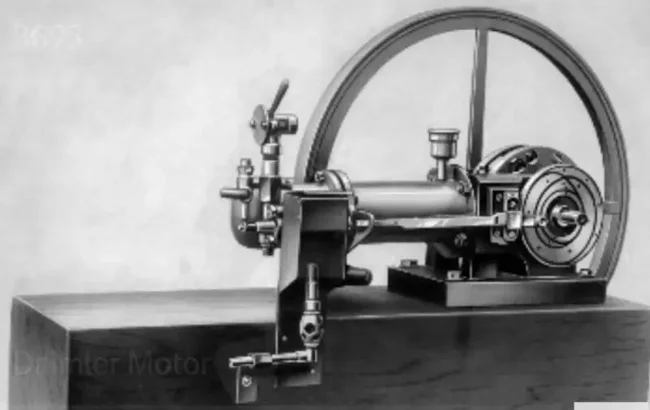
A radical improvement was the change in the ignition method and valve control, and as a result, it became possible to regulate the power and engine speed. 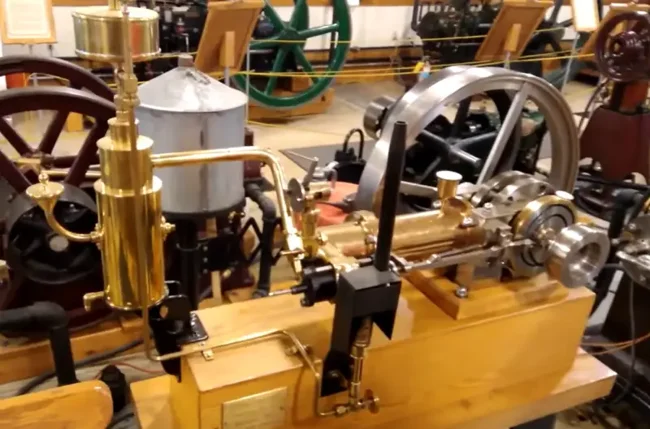
A working copy of the Daimler engine
The single-cylinder engine weighed about 60 kilograms, had a working volume of 100 cm³ and produced about 1/4 hp at 600 rpm. Another innovation was the transition from a horizontal to a vertical cylinder. 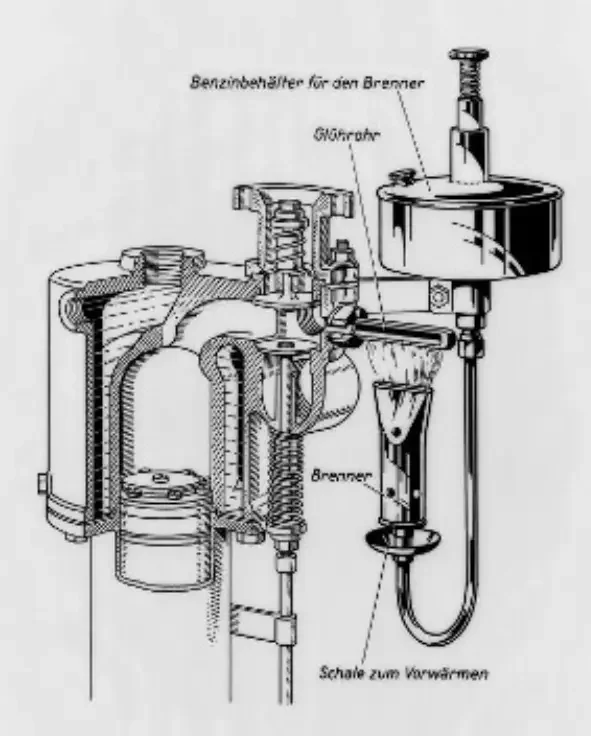
In 1883, Daimler and Maybach's dream came true - they launched the first gasoline engine. "Motorle" developed a power of 0.25 horsepower and was much lighter than a gas engine. This became a real sensation.
The next one, invented and manufactured in the first version in 1884, was an even more advanced experimental engine, which went down in the history of technology as Standuhr or "Full-body clock", already produced about 1 hp (735 W) at 600 revolutions. 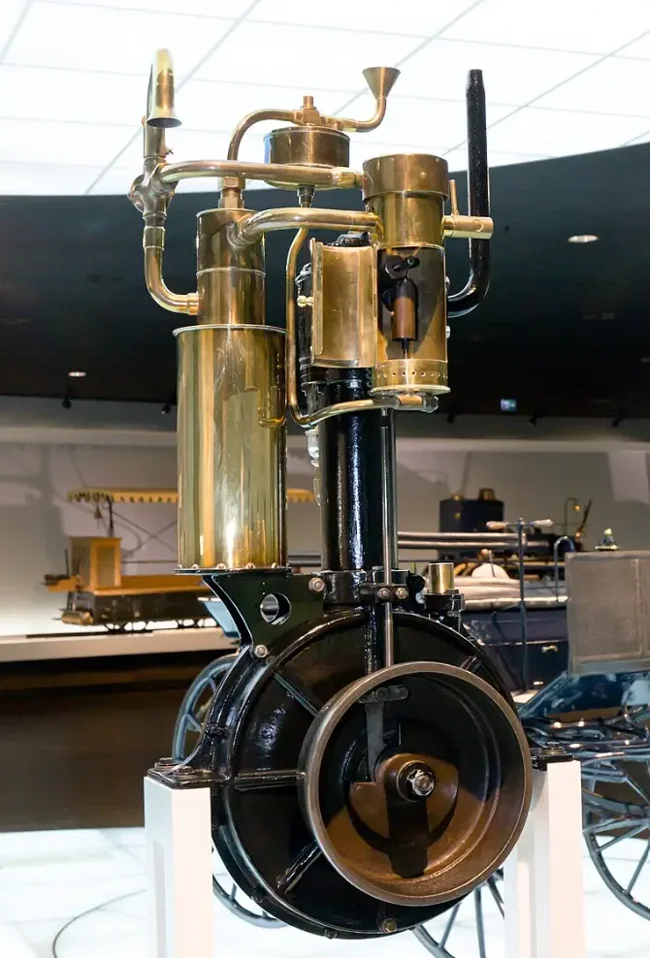
Standuhr, version from 1886, with a displacement of 462 cc and an output of 1.1 hp (0.8 kW) at 650 rpm.
On April 3, 1885, Daimler applied for a patent for a new engine, which for the first time had an oil- and dust-tight closed crankcase, as a "gas or oil engine".
On March 25, 1886, Daimler received a patent for a carburetor as an "apparatus for evaporating oil for oil engines", which allowed the use of gasoline as a fuel. 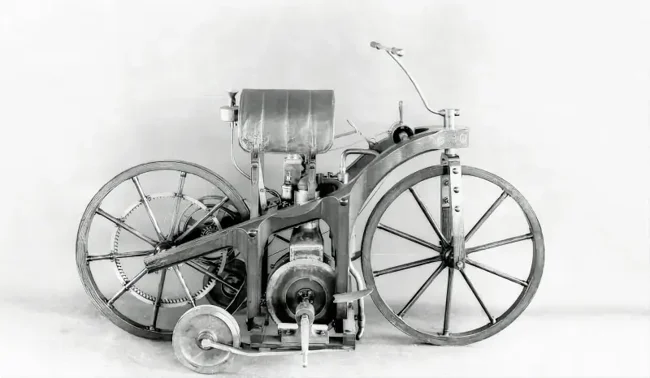
In the same year, Daimler and Maybach created the Reitwagen, the first motorcycle with a wooden frame and a gasoline engine with half a horsepower. The small, single-cylinder engine, modeled on the "grandfather clock", was mounted vertically under the driver's seat. This "vehicle with a gas or gasoline engine" was protected by patent DRP 36423 on August 29, 1885. And this motorcycle became the first vehicle in the world equipped with an internal combustion engine.
In October 1886, Daimler and Maybach installed the already successful "grandfather clock" engine on a horse-drawn carriage. At the Esslingen machine factory, again under the direction of Maybach, a Daimler engine was installed on this carriage, as well as a turntable. And it was this Daimler "motor carriage" that became the first four-wheeled car in the world. 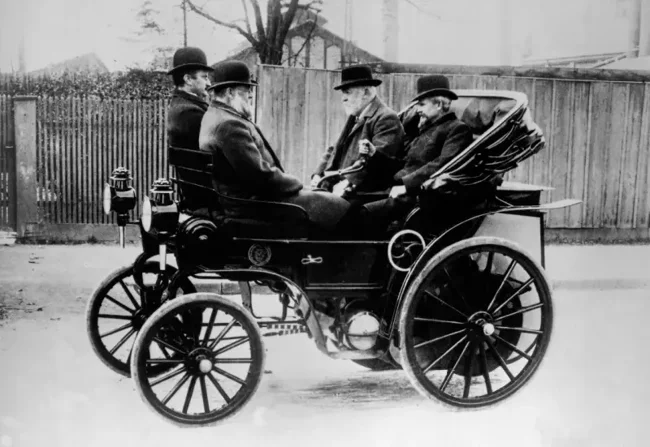
Daimler's Motor Carriage (Motorkutsche), driven by Wilhelm Maybach
Then came the installation of the engine in a six-meter-long boat. In August 1886, Daimler and Maybach tested the motorboat on the Neckar River near Cannstatt, which was powered by the same "grandfather clock". 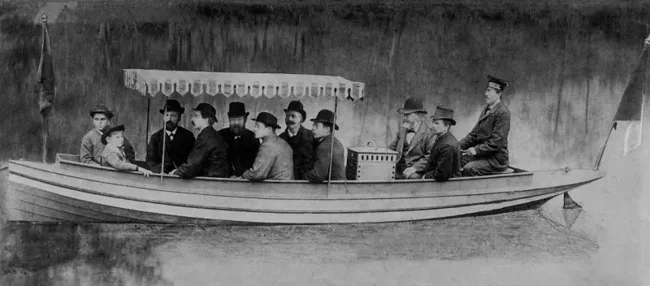
The motorboat was then called the "Daimler Boot"
In 1887, Daimler installed an engine on an exhibition tram. 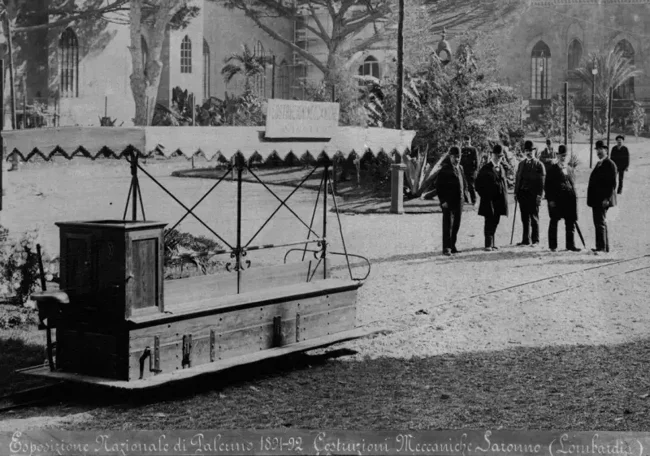
Daimler's tram at the Palermo exhibition
Soon after, Daimler built a truck and a trolley with a two-cylinder V-shaped engine (1888). 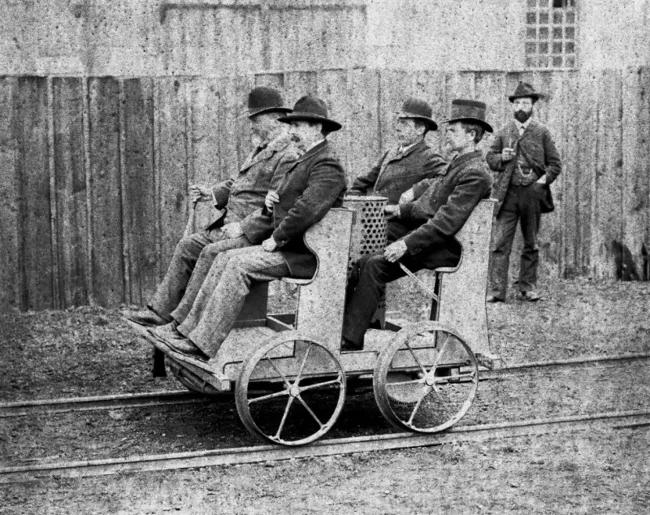
Daimler's handcar. And again we see Daimler and Maybach together 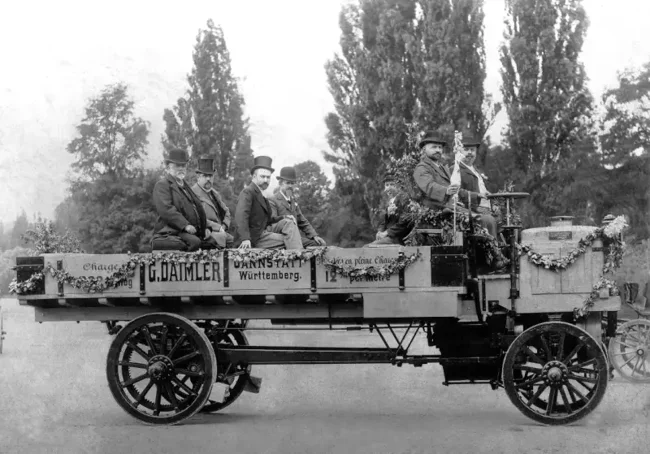
And this is already a real truck. And again two technical geniuses side by side. 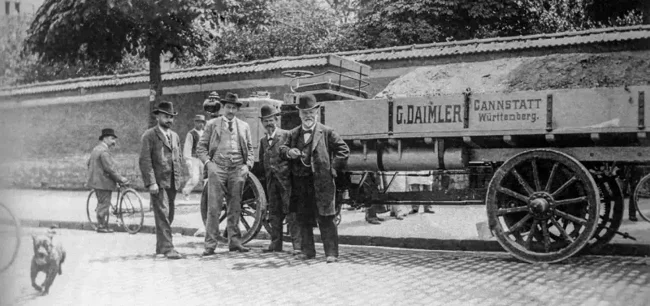
In July 1887, Daimler expanded the production capacity of his company and changed its location; the workshop on the estate was absolutely unsuitable for the serial production of the required products, and the company hired an additional 23 workers.
In 1888, Daimler equipped the gondola of a hot air balloon with his engine, which rotated the propeller, thus creating one of the first airships.
In July 1888, in Hanover, he presented to the public the world's first fire engine equipped with water pumps. This unit was powered by a two-cylinder internal combustion engine with a capacity of 4 hp. 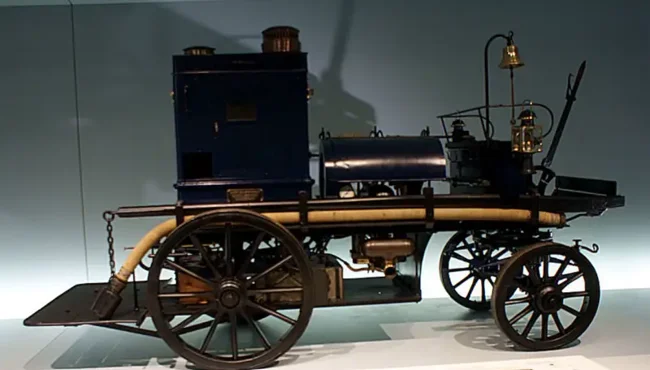
Daimler-Motorspritze fire engine, Patent Nr-46779
In 1886–1889, Maybach, commissioned and inspired by Daimler, created the Stahlradwagen or Motor-Quadricycle, a car that premiered at the World Exhibition in Paris in 1889. It was truly a car, the first vehicle completely unconnected to any “carriages,” with a power of 1.5 hp and a speed of up to 18 km/h. 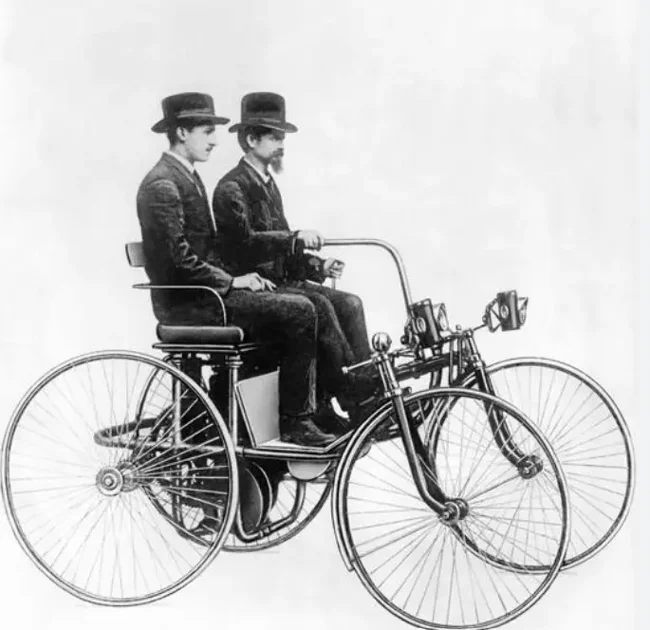
At the Chicago World's Fair in 1893, Daimler presented a modified version of this vehicle, which was subsequently quite widely in demand and operated in "advanced" North America. 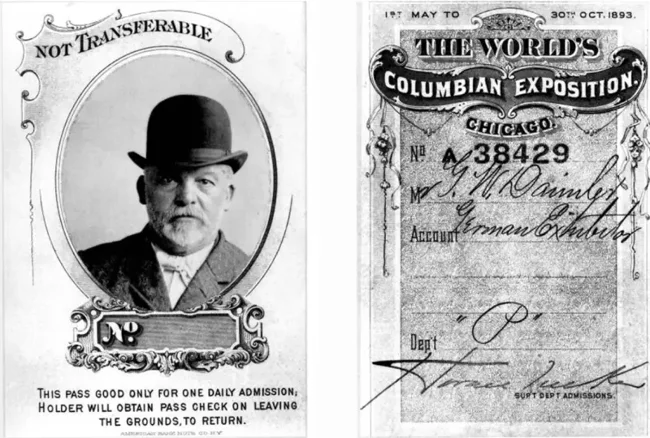
Gottlieb Daimler's personal pass to the Chicago World's Fair
Investors are already needed to expand production. Daimler finds investors: Max Duttenhofer and Wilhelm Lorenz.
On November 28, 1890, the three founded a joint-stock company called Daimler-Motoren-Gesellschaft (DMG). 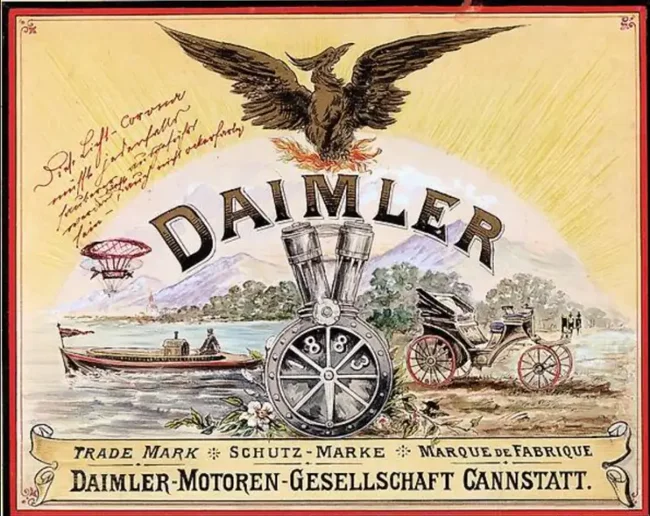
DMG advertising poster. It is the complete embodiment of Gottlieb Daimler's dream 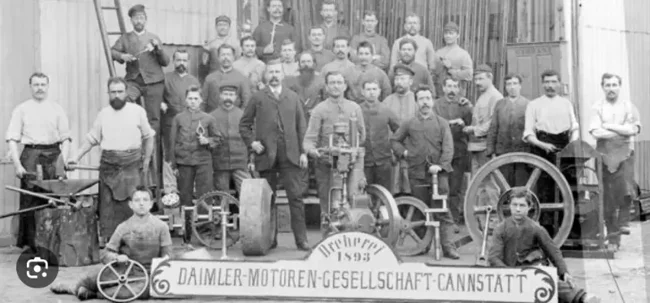
1893. Workers in the DMG turning shop.
In March 1897, Gottlieb Daimler became Chairman of the Supervisory Board of Daimler-Motoren-Gesellschaft, but unfortunately he had only three years left to live.
A year before his death, in 1899, he commissioned Maybach to build a racing car, the first passenger car with a four-cylinder engine built by Daimler-Motoren-Gesellschaft, called the Daimler Phönix. The engine had a capacity of 2.1 liters, and produced 8 hp (5.9 kW) at 720 rpm. The car's top speed was 24 km/h. It was the Daimler Phönix that received the name Mercedes, which was registered as a trademark in June 1902. 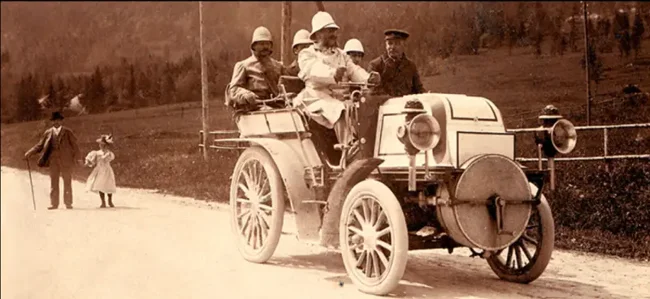
legendary Daimler Phoenix, later became Mercedes. 1897 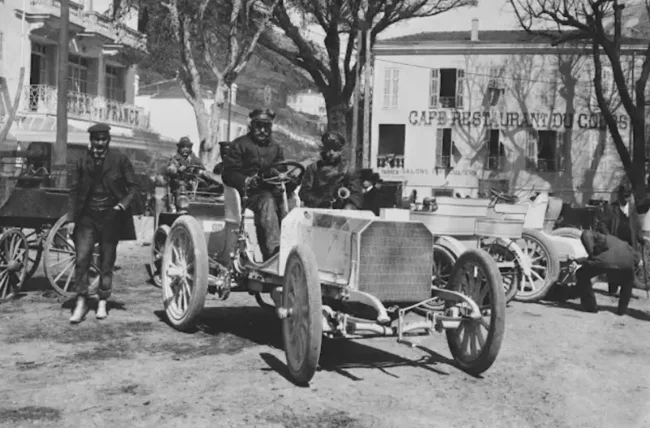
Mercedes 1903
Only a few years have passed, and what technical progress! 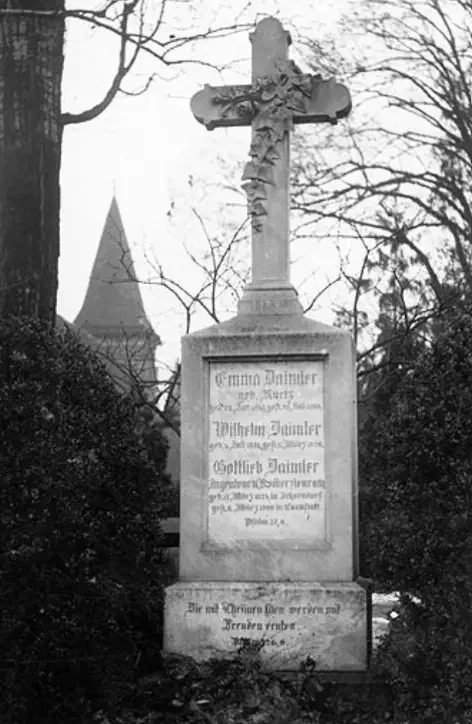
Daimler Family Grave
Gottlieb Daimler died on March 6, 1900. He was buried in the Uff-Kirchenhof cemetery in Bad Cannstatt, next to his wife Emma. In June 1902, in memory of Daimler, engineer, inventor and designer, the Association of German Engineers (VDI) erected a memorial plaque: a relief image embedded in a boulder, next to the workshop where his first engines were assembled. 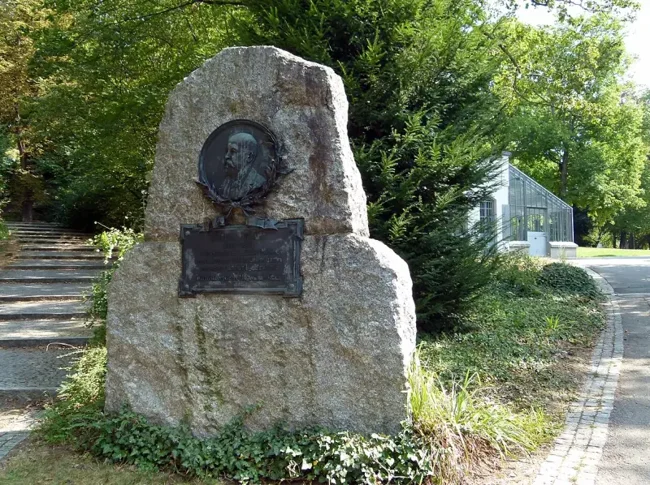
Gottlieb Daimler's birthplace in Schorndorf and the same workshop in Bad Cannstatt now house museums dedicated to the automobile pioneer and founder of DMG.
Maybach died on December 29, 1929. He was also buried in the Uff cemetery. Even in death, he remained a faithful companion of Daimler and rests in close proximity to his kindred spirit.
In 1926, Daimler-Motoren-Gesellschaft merged with Benz & Co Rheinische Gasmotorenfabrik, headed by Karl Benz.
This is how the Daimler-Benz AG concern was born, later Mercedes-Benz Group AG, Daimler-Benz AG, Daimler-Chrysler AG, then simply Daimler AG, and today it is Mercedes-Benz Group AG. 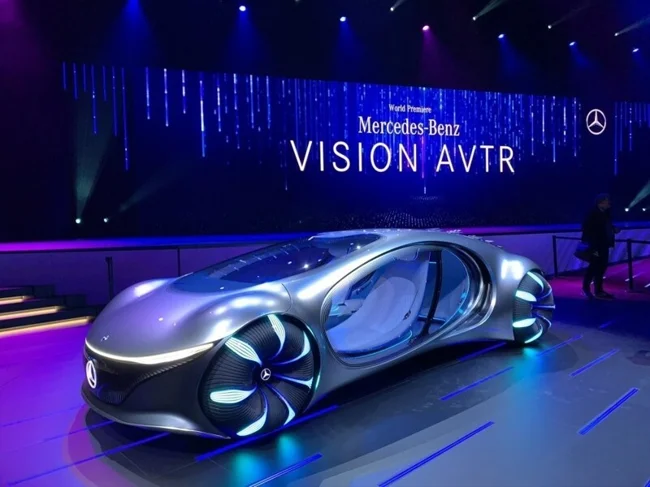
Add your comment
You might be interested in:

